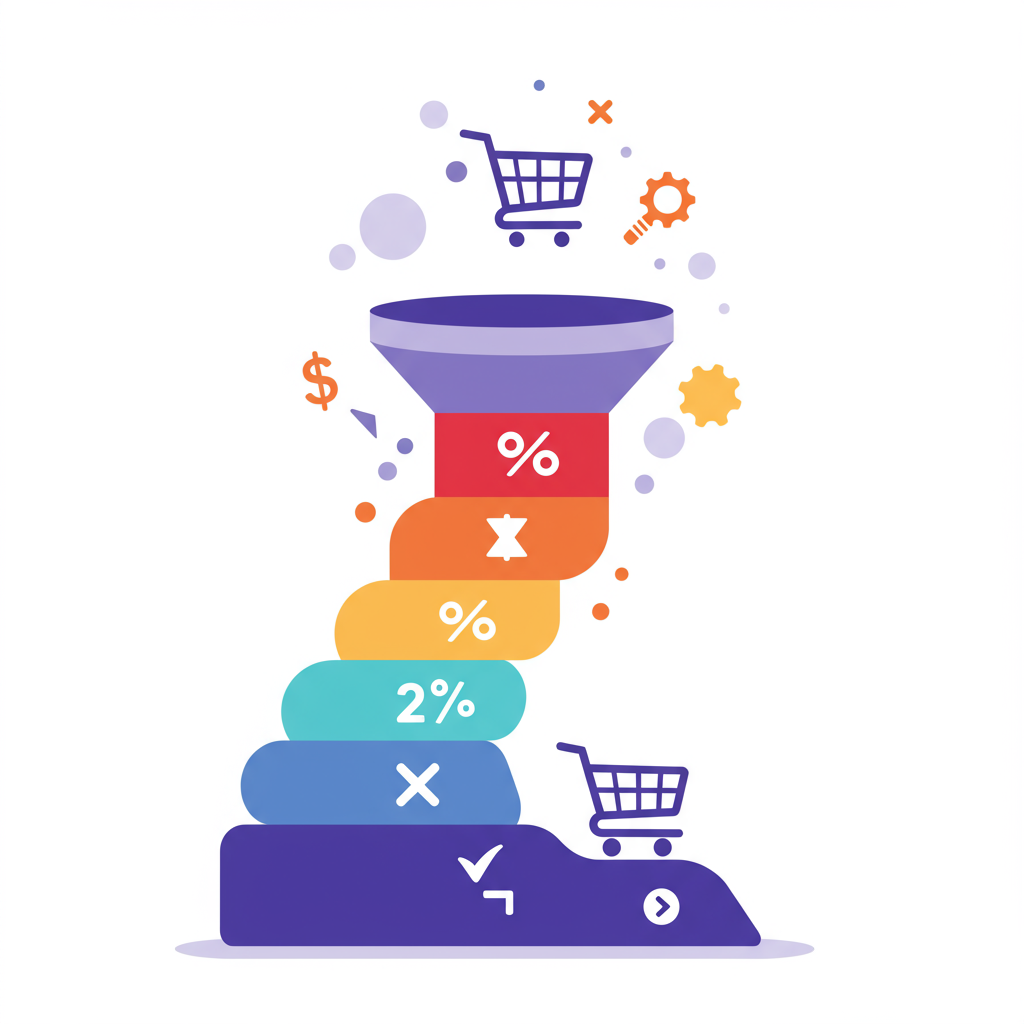Unlock Growth and Boost Conversions for Your E-commerce Store
As a Shopify merchant, I know you’re constantly looking for ways to grow your business.
One of the most powerful concepts we can leverage is the marketing funnel.
It’s not just a buzzword; it’s a strategic framework that maps out your customer’s journey from initial awareness to becoming a loyal advocate.
Optimizing this funnel is absolutely crucial for maximizing your return on investment and scaling your Shopify store.
Today, I want to walk you through the key stages of the marketing funnel and share actionable techniques you can implement right now to boost your conversions.
Think of your marketing funnel as a series of steps your potential customers take.
Each step presents an opportunity to engage, educate, and ultimately convert them into paying customers.
Let’s dive into the first stage: Awareness. This is where potential customers first discover your brand or products.
Our goal here is to cast a wide net and attract as many relevant visitors as possible to our Shopify store.
Search Engine Optimization (SEO) is foundational. I focus on optimizing product titles, descriptions, and blog content with relevant keywords.
This helps us rank higher in Google searches, bringing in organic traffic.
Paid advertising, like Google Ads and Facebook/Instagram Ads, allows us to target specific demographics and interests.
I find these incredibly effective for immediate visibility and reaching new audiences.
Social media marketing is another powerful tool. We use platforms like Instagram, TikTok, and Pinterest to showcase our products and build a community around our brand.
Engaging content, behind-the-scenes glimpses, and user-generated content all contribute to brand awareness.
Content marketing, through a blog or helpful guides on our Shopify store, positions us as an authority in our niche.
This attracts visitors looking for solutions, not just products, and builds trust from the outset.
Once we’ve captured their attention, we move to the Interest or Consideration stage.
Here, our aim is to engage these visitors and build desire for our products.
High-quality product pages are non-negotiable. I ensure our product images are stunning, descriptions are detailed and persuasive, and customer reviews are prominently displayed.
User-generated content, like customer photos and testimonials, adds immense social proof. I actively encourage and feature these on our product pages.
Email marketing becomes vital here. A well-crafted welcome series for new subscribers can introduce them to our brand story and highlight our best sellers.
Abandoned cart emails are also incredibly effective. I’ve seen significant recovery rates by reminding customers about items left in their cart.
Personalization, whether through product recommendations or tailored email content, makes customers feel valued and understood.
I use Shopify apps to help with this.
Offering live chat support on our store can answer immediate questions and remove purchase barriers, moving customers closer to a decision.
Now, we’re at the Decision or Conversion stage – the moment of truth!
Our primary goal here is to make the purchase process as smooth and frictionless as possible.
A streamlined checkout process is paramount. I ensure there are minimal steps, clear instructions, and multiple payment options.
Trust signals, such as security badges, customer testimonials, and clear return policies, build confidence.
I always make sure these are visible, especially near the checkout.
Clear Calls to Action (CTAs) are essential. Buttons like “Add to Cart” or “Buy Now” should be prominent and compelling.
Limited-time offers, discounts, or free shipping can provide that final nudge for hesitant buyers.
I often use these strategically to create urgency.
Free shipping and easy returns are powerful incentives that reduce perceived risk for the customer.
Finally, we enter the Retention and Loyalty stage. Our work doesn’t end after the sale; it’s just beginning!
Keeping existing customers happy and encouraging repeat purchases is far more cost-effective than acquiring new ones.
Post-purchase email sequences are excellent for thanking customers, providing tracking information, and offering related product suggestions.
Loyalty programs, where customers earn points for purchases, encourage them to return. I’ve found these incredibly effective for building long-term relationships.
Exceptional customer service is non-negotiable. Prompt, friendly, and helpful support turns one-time buyers into raving fans.
Upselling and cross-selling relevant products after a purchase can significantly increase customer lifetime value.
Building a community around our brand, perhaps through a private Facebook group or exclusive content, fosters a sense of belonging.
To truly optimize, we must constantly analyze and iterate.
I regularly dive into our Shopify analytics and Google Analytics to understand customer behavior.
A/B testing different headlines, product images, or CTA buttons helps us identify what resonates best with our audience.
Tools like heatmaps and session recordings give us visual insights into how users interact with our store.
I also actively solicit customer feedback through surveys or direct communication.
This iterative process of testing, learning, and refining is what drives continuous improvement in our funnel.
Remember, optimizing your Shopify marketing funnel isn’t a one-time task; it’s an ongoing journey.
By focusing on each stage and continuously refining your strategies, you’ll build a robust system that consistently attracts, converts, and retains customers.
I encourage you to pick one or two techniques from each stage and start implementing them today.
Small changes can lead to significant improvements over time.
What do you think about this article? I’d love to hear your thoughts and any strategies you’ve found successful!






